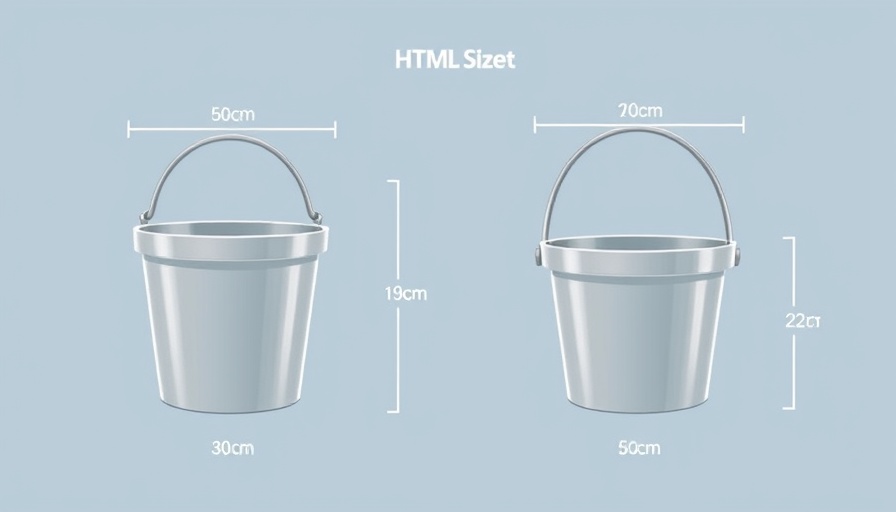
Understanding the Concept of 'Bucket Size' in Business
The 'bucket size' metaphor, a term popularized through the works of Donald O. Clifton, emphasizes how the quantity and quality of experiences we cultivate directly relate to our happiness and well-being. Just like a physical container, our mental bucket, which represents our capacity for joy, satisfaction, and fulfillment, can be managed to enhance our overall life quality. For small and medium-sized businesses, understanding this concept can be pivotal in shaping workplace dynamics and employee satisfaction.
How Bucket Size Affects Business Performance
As Clifton noted, each positive interaction at work fills our bucket, while negative encounters deplete it. In a business context, recognizing this can lead to significant insights regarding employee engagement and productivity. When employees perceive their work environment as supportive and nurturing, their metaphorical buckets overflow, contributing to higher morale and better performance. Conversely, if the workplace is filled with criticism and negativity, it leads to depleted buckets, lowering morale and productivity.
The Importance of Positive Interactions
Businesses can employ several techniques to fill the buckets of their employees. Simple acts of recognition, gratitude, and kindness can significantly enhance employee satisfaction. Just as Carol McCloud, an advocate for the bucket-filling philosophy, suggests, these small yet impactful gestures create a ripple effect, leading employees to also engage positively with others. For instance, when a manager takes the time to acknowledge an employee's hard work, it not only fills that employee's bucket but encourages them to do the same for their coworkers.
Building a Culture of Fulfillment
Creating an organizational culture that prioritizes emotional well-being can mean re-evaluating traditional performance metrics. Rather than solely focused on output and outcomes, businesses should also assess the emotional climate of their workplace. The implications of this inquiry can lead to significant organizational changes aimed at enhancing employee engagement. As Clifton noted, understanding the dynamics of positive interactions can lead to high-performance cultures that drive success.
Strategies for Filling Buckets in the Workplace
Some practical strategies for small and medium businesses to implement include:
- Encouraging Open Communication: Allowing employees to express their thoughts can fill buckets by validating their feelings and concerns.
- Implementing Recognition Programs: Programs that reward positive behavior can significantly increase employee satisfaction.
- Offering Support Resources: Providing access to mental health resources or team-building activities contributes positively to an employee's bucket.
Thoughts on Why 'Bucket Size' is Crucial for SMBS
For small and medium-sized businesses, ensuring employees feel valued and recognized can lead to a more engaged workforce. The emotional wellbeing of employees often translates directly into their productivity and loyalty. Just as Clifton suggested focusing on strengths rather than weaknesses, businesses should strive to create environments where positives outweigh negatives. Acknowledging the role of emotional factors provides a new lens through which business success can be measured.
Moving Forward: A Call to Action for Businesses
As we reflect on the insights shared by Clifton and others regarding emotional health in the workplace, it’s clear that the bucket size analogy extends far beyond personal happiness. Businesses must actively create environments conducive to fulfilling employees' emotional needs. Recognizing that our interactions exponentially affect one another can forge a path towards satisfaction and success for individuals and businesses alike. Every small business owner should aim to ensure their employees’ buckets are consistently being filled, laying the groundwork for a thriving workplace and improved performance.
 Add Row
Add Row  Add
Add 



Write A Comment